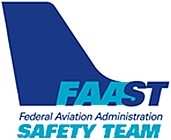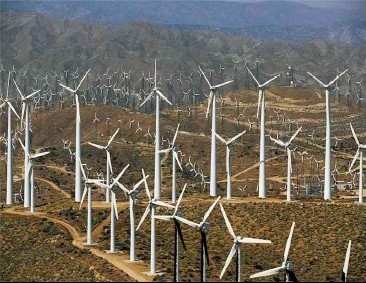Thu, May 13, 2010
Often Uncharted, Difficult To See
 The FAA Safety Team (FAAST) has published an advisory about the
hazards of MET (Meteorological) Towers that are often erected
quickly and can be in place for months or years. The towers are put
up to help gather meteorological information before the
construction of a wind farm or other alternative energy
project.
The FAA Safety Team (FAAST) has published an advisory about the
hazards of MET (Meteorological) Towers that are often erected
quickly and can be in place for months or years. The towers are put
up to help gather meteorological information before the
construction of a wind farm or other alternative energy
project.
Towers generally range in height from 30, 50, 60 and 80 meters
tall. Any tower less than 200 feet in height is not required by
regulation to be lighted. At this time there is no standardized
notification system in place to indicate when and where these
towers are erected.
These are not posted in any Airport Facility Directory, NOTAMS,
etc. unless they interfere with airport operations.

MET Tower FAA Photo
According to the FAA, a sponsor proposing any type of
construction or alteration of a structure that may affect the
National Airspace System (NAS) is required, under the provisions of
Title 14 Code of Federal Regulations (14 CFR part 77, Objects
Affecting Navigable Airspace), to notify the FAA by completing the
Notice of Proposed Construction or Alteration form.
Generally, any structure that exceeds an overall height of 200
feet above ground level (AGL) or exceeds any obstruction standard
contained in 14 CFR part 77 should be marked and/or lighted.
Because of the lighting requirement, most METs are just under 200
feet AGL. However, even if the tower is under 200 feet AGL, or
meets 14 CFR part 77 standards, the FAA may still recommend marking
and/or lighting because of its particular location.

Wind Farm Dept. of Interior Photo
The wind turbines that follow the MET towers can also be
difficult to see. An inter-agency memo issued by the Department of
the Interior and the Forest Service on low-level flight operations
says that wind turbine generators are usually painted white because
it’s the most effective daytime early warning device. Other
colors, such as light gray or blue, appear to be significantly less
effective in providing daytime warning. Daytime lighting of wind
turbines, regardless of height, is not required, as long as the
structures are painted in a bright white color or light off-white
color.
More News
Aero Linx: JAARS Nearly 1.5 billion people, using more than 5,500 languages, do not have a full Bible in their first language. Many of these people live in the most remote parts of>[...]
'Airplane Bounced Twice On The Grass Runway, Resulting In The Nose Wheel Separating From The Airplane...' Analysis: The pilot reported, “upon touchdown, the plane jumped back>[...]
"Burt is best known to the public for his historic designs of SpaceShipOne, Voyager, and GlobalFlyer, but for EAA members and aviation aficionados, his unique concepts began more t>[...]
"Polaris Dawn, the first of the program’s three human spaceflight missions, is targeted to launch to orbit no earlier than summer 2024. During the five-day mission, the crew >[...]
There Are SO Many Ways To Get YOUR Aero-News! It’s been a while since we have reminded everyone about all the ways we offer your daily dose of aviation news on-the-go...so he>[...]
 ANN's Daily Aero-Linx (05.04.24)
ANN's Daily Aero-Linx (05.04.24) NTSB Final Report: Quest Aircraft Co Inc Kodiak 100
NTSB Final Report: Quest Aircraft Co Inc Kodiak 100 Aero-News: Quote of the Day (05.04.24)
Aero-News: Quote of the Day (05.04.24) Aero-News: Quote of the Day (05.05.24)
Aero-News: Quote of the Day (05.05.24) Read/Watch/Listen... ANN Does It All
Read/Watch/Listen... ANN Does It All





